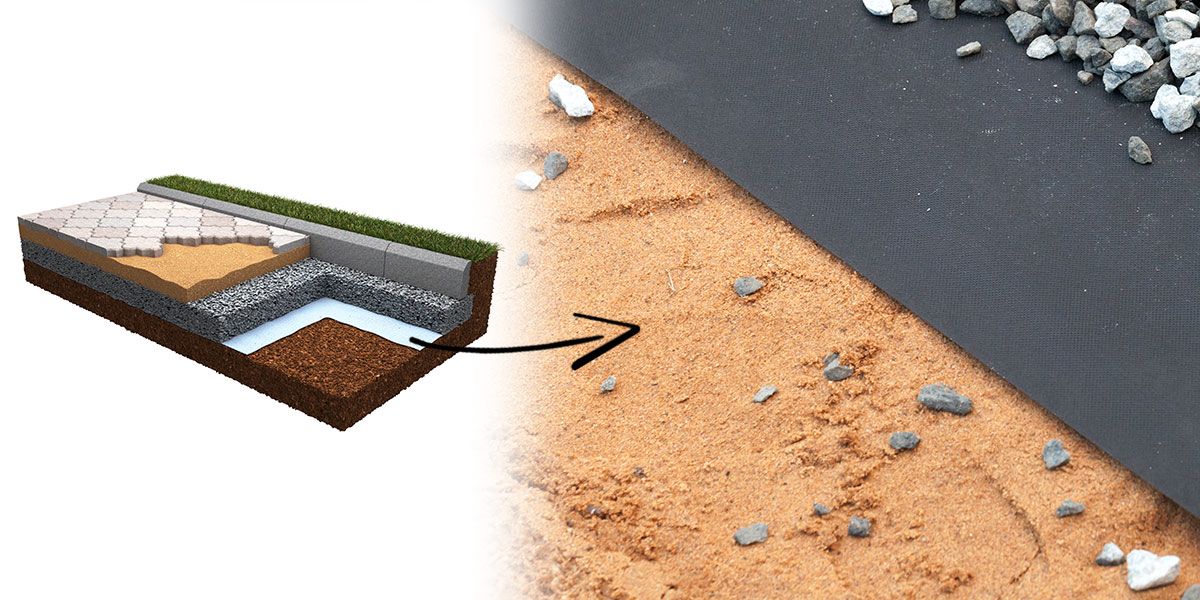In the landscaping and horticultural supply business, success hinges on the quality of the materials you provide. For contractors, nurseries, and garden centers, the choice of wholesale landscape fabric is not just a matter of price; it’s a strategic decision that affects the efficiency of their projects, the health of their plants, and their professional reputation. A high-quality landscape fabric serves as a critical barrier, providing long-term weed control, improving soil health, and ensuring a pristine finish for any outdoor project.
The Key Benefits of High-Quality Wholesale Landscape Fabric
Choosing the right landscape fabric is a fundamental step that delivers significant long-term advantages for both you and your customers.
- Superior Weed Control: The primary function of landscape fabric is to suppress weed growth by blocking sunlight. High-quality fabric is tightly woven yet permeable, effectively starving weeds of light while allowing air, water, and nutrients to reach the soil and plant roots. This drastically reduces the need for manual weeding and herbicides, saving time and labor costs.
- Enhanced Soil Health and Moisture Retention: Unlike plastic sheeting, professional-grade landscape fabric allows for proper water and air circulation. This helps retain soil moisture, reducing the need for frequent watering. It also prevents soil erosion and compaction, creating a healthier environment for plants to thrive.
- Durability and Longevity: Investing in wholesale fabric made from durable materials like woven polypropylene ensures it will withstand harsh weather, foot traffic, and UV exposure. This longevity means fewer replacements and less maintenance for your clients, which builds trust and encourages repeat business.
- Versatility in Applications: High-quality landscape fabric is incredibly versatile. It’s an essential component for a wide range of projects, including:
- Creating a base for mulched garden beds and pathways.
- Stabilizing soil on slopes to prevent erosion.
- Separating aggregates in hardscape projects like patios and driveways.
- Protecting potted plants in nurseries from weed contamination.
-
What to Look for When Sourcing Wholesale Landscape Fabric
When selecting a supplier, consider these key factors to ensure you’re providing the best possible product to your customers.
- Material and Weight: Look for woven or non-woven polypropylene fabric. The weight or “oz/sq yd” indicates its thickness and durability. Heavier fabric (e.g., 3-5 oz) is best for high-traffic areas and heavy-duty applications, while lighter fabric (e.g., 1-2 oz) is suitable for gardens and temporary projects.
- Permeability: The fabric must allow water and air to pass through. Test or inquire about its permeability rating to ensure it won’t create a water-logged environment that can harm plant roots.
- UV Resistance: Sunlight exposure can degrade fabric over time. Ensure the fabric is UV-stabilized to prevent premature breakdown and ensure it maintains its strength and weed-blocking properties for years.
- Roll Size and Packaging: Efficient packaging and a variety of roll sizes are crucial for wholesale. Offering different widths and lengths allows your customers to purchase exactly what they need for a project, minimizing waste and maximizing convenience.
Summary
Choosing the right wholesale landscape fabric is a foundational decision for any business in the green industry. It’s more than just a commodity; it’s a strategic tool that improves project outcomes, reduces long-term maintenance, and elevates a landscaper’s professional reputation. By providing a high-quality, durable, and versatile product, you position your business as a trusted partner, ensuring your clients’ success and your own long-term profitability.
FAQ
1. Is all landscape fabric the same?
No, landscape fabrics vary significantly in material, weight, and permeability. High-quality, professional-grade fabrics are designed for long-term durability and proper soil health, unlike cheaper versions that can degrade quickly and harm plants.
2. How does landscape fabric help with weed control?
Landscape fabric prevents weed growth primarily by blocking sunlight from reaching the seeds in the soil. While it doesn’t kill existing weeds, it effectively prevents new ones from sprouting and growing.
3. Can landscape fabric be used under mulch?
Yes, it’s one of its most common uses. Placing fabric under mulch provides an extra layer of weed protection and helps prevent the mulch from mixing with the soil, which extends its lifespan and keeps the bed looking tidy.
4. What is the difference between woven and non-woven fabric?
Woven fabric is typically stronger and better for heavy-duty applications like pathways or driveways, as it prevents shifting. Non-woven fabric is often used in garden beds and is known for its excellent water permeability and ability to separate soil from aggregates.
Post time: Sep-12-2025


